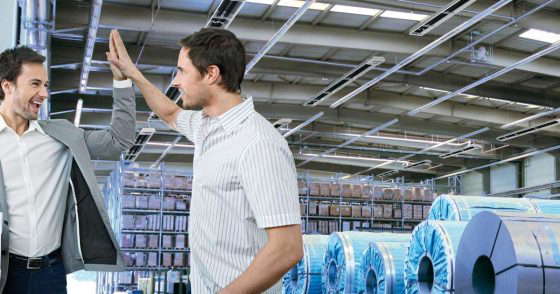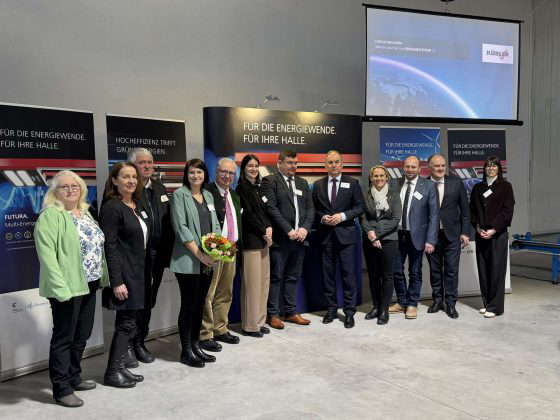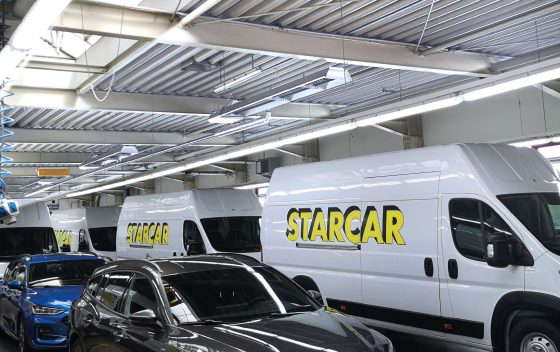Why infrared is probably the best heating principle for halls and what the GEG has to do with it.
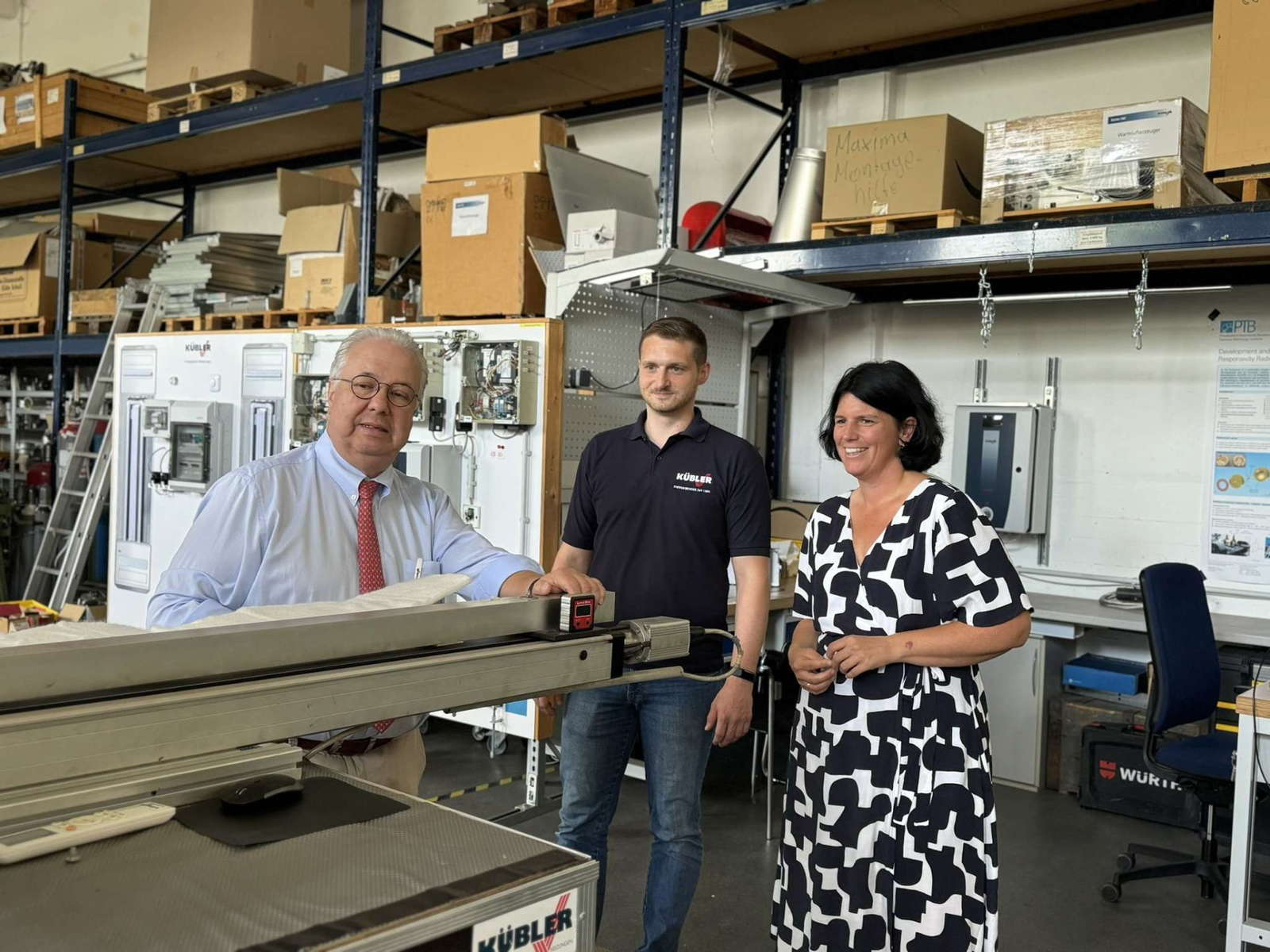
"I came to understand the technology," says Carina Konrad as Thomas Kübler begins his presentation and apologizes for the perhaps somewhat dry subject matter. There was a good reason why the deputy state chairwoman of the FDP in Rhineland-Palatinate and deputy chairwoman of the FDP parliamentary group in the Bundestag made her way to Ludwigshafen:
"KÜBLER shows how it is possible to combine climate protection and economic efficiency through innovative technologies such as infrared heating. We must do everything we can to spread these practicable solutions in public discourse and anchor them in widespread use," says Carina Konrad. The top politician therefore wanted to find out first-hand how established industrial companies can make the energy transition economically and technically viable.
What is needed here are solutions that are so economical that the switch to renewable energies gives the industry a competitive advantage. "This is only possible with technologies that have a high level of usability and maximum energy efficiency with an investment that is economically viable," says Thomas Kübler.
Carina Konrad emphasizes the important contribution that medium-sized companies like KÜBLER in particular make: "Germany's greatest contribution to climate protection is to use its own engineering power to develop technologies that are in demand on the market due to their economic advantages in application. KÜBLER shows what is possible in 35 years of company history. We need more of this," said Konrad. During her visit to Ludwigshafen, Konrad made it clear that a political rethink must also take place here. Thanks to the Free Democrats' participation in the government, the Building Energy Act in the residential sector has been adapted to make it technology-neutral. Politics must create the conditions for the potential of all technologies to be exploited. This approach should also be ensured in the area of industrial and commercial buildings, as focusing on a single technology (i.e. the heat pump) is not very functional there. The deputy FDP state and parliamentary group leader in the Bundestag describes the preservation of productive jobs in Germany as one of the most important tasks of politics, although she is aware that the development of energy resources via renewable energies and the hydrogen strategy in Germany require sufficient time.
At the moment, whenever people talk or write about heating and the energy transition, there is only one focus: Residential buildings and, at most, offices or similar multi-storey buildings. But there is also another type of building: Industrial and commercial buildings. Nobody talks about hall buildings, says Thomas Kübler. And the BMWK also seems to have largely lost sight of this type of building in the Building Energy Act. Yet huge industrial and commercial halls - only 2 percent of all heated buildings in Germany - consume enormous amounts of energy. To be more precise: around 15 percent of the total annual energy consumption for space heating in Germany!
This is a figure that is highly relevant for the energy transition and could already be reduced by 50 to 70 percent today with the help of long-established and proven decentralized infrared technology. An enormous contribution on the way to climate neutrality, which also pays off economically for companies and can compensate for the current competitive disadvantages in Germany, such as high energy prices.
Die neueste Generation Infrarotheizungen lässt sich dazu energieflexibel mit Strom, PV-Strom oder auch Wasserstoff beheizen und könnte die Wärmeversorgung in Industrie und Gewerbe heute schon aus dem Stand auf Zero-CO₂ dekarbonisieren. Bei absoluter Versorgungssicherheit – auch das ein wichtiger Punkt für die Unternehmen. Für Carina Konrad ist es zentral, dass schnellstmöglich auch eine klare politische Perspektive für Innovationen wie die Infrarotheizung bei Hallenneubauten geschaffen wird.
At the end of the conversation between Carina Konrad and Thomas Kübler and the insights into the technology, it became clear that the natural heating principle of infrared is actually quite simple to explain. Just as the sun heats the part of the earth's surface that it hits with its rays from a distance of 149,597,870 km, infrared heaters from hall heights of 8, 10, 20 meters and more heat the area of use in the lower hall area. Quite simply according to the laws of physics, loss-free and therefore highly efficient.
Carina Konrad and Thomas Kübler agree that more needs to be said about halls and their very specific heating requirements, if only because of their height and volume. They also agree that there is an urgent need for more exchange between political decision-makers, science and the commercial enterprises that, like KÜBLER, have the practical technical expertise and are developing innovations in Germany for the energy transition.
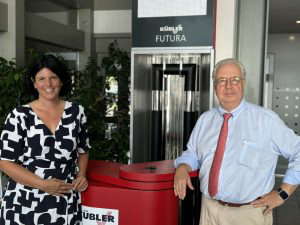
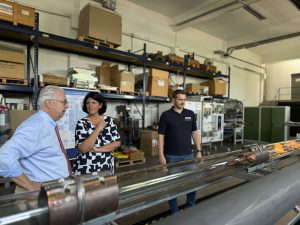
Interessiert an unseren Presse-Bildern?
Sie möchten alle Bilder aus dem Artikel in höchster Qualität herunterladen? Klicken Sie einfach unten auf den Button und genießen Sie unsere Pressebilder in höchster Auflösung!
Alle Pressebilder herunterladen-
The new standard heating line for high performance requirements and tight budgets.
-
We had the honor of welcoming the Ambassador of the Federal Republic of Germany in Austria, His Excellency Vito Cecere, to the inauguration ceremony of the first RES project in Austria - together with other high-ranking representatives from politics, business and associations. First and foremost, the Managing Director of the German Chamber of Commerce in Austria (DHK) Thomas Gindele, the senior expert for renewable energies at the German [...]
-
The industrial site at Alusingen-Platz 1 has a long tradition. Aluminum has been processed there since 1912. Today, internationally active companies such as Amcor Flexibles Singen GmbH, Constellium and 3A Composites are located on the site of the aluminum plant. What has not changed is the great importance of the site for the region. The three companies alone employ over [...]
-
The renovation project Since 1994, the halls at the main site in Neuss have been heated with a central hot air system using a gas-powered hot water boiler system, which resulted in high energy costs. In order to achieve the company's own ambitious climate targets and increase efficiency, it was decided in 2021 to convert to a modern, decentralized heating system. In collaboration with the engineering firm Enviconsult, a heat demand analysis was carried out and [...]
